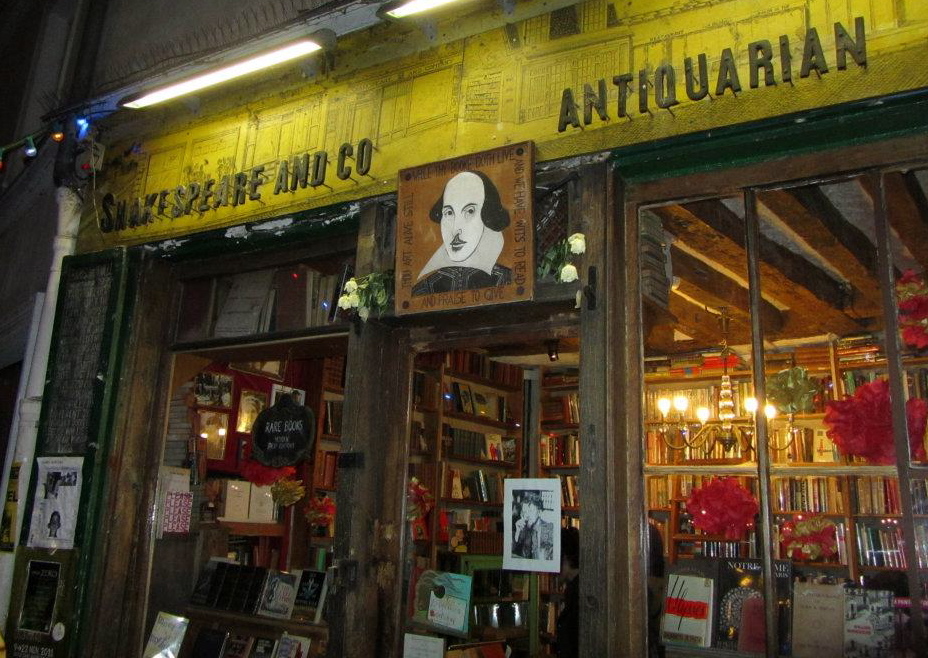 This week, VIDA—a nonprofit organization for women in the literary arts—released its 2012 Count, a report comparing the numbers of women and men (1) who reviewed books and (2) whose books were reviewed at thirteen of the most important literary/cultural publications over the past three years. Their data in chart form can be found here, and their brief analysis here.
This week, VIDA—a nonprofit organization for women in the literary arts—released its 2012 Count, a report comparing the numbers of women and men (1) who reviewed books and (2) whose books were reviewed at thirteen of the most important literary/cultural publications over the past three years. Their data in chart form can be found here, and their brief analysis here.
This is the first I've heard of VIDA, and so far I'm impressed with it, especially its emphasis on data and its effort to stay focused on its original mission of examining women in writing without getting distracted by other (admittedly important) issues. Having said that, I wish they had provided some more background on the methodology of their 2012 Count, because I don't understand why they included some cover-to-cover/overall data or non-review-related data like Paris Review interviews. Because this seems to me to muddy the waters, I only talk about their book-review-related data here.
The results are a combination of sobering and not as bad as I expected—but that might say more about my own low expectations than anything else.
- The Good: The New York Times Book Review and the Boston Review. The NYTBR topped the list, with women making up 45 percent of the reviewing pool. Close behind was the Boston Review, with 42 percent of reviewers being women.
- The Bad: Harper's, the New Republic, and the New York Review of Books. Women fell from an already-low 18 percent of Harper's book reviewers in 2010 to a jaw-dropping 9 percent in 2012. At the New Republic, they dropped from 21 percent in 2010 to a mere 10 percent in 2012. The New York Review of Books really breaks my heart, though: I love this publication, but only 16% of its reviewers in both 2010 and 2012 were women. Any way you look at it, these numbers are pretty dismal.
Best and worst aside, women's representation in most of the other publications has held pretty steady over the past three years, fluctuating by only a few percentage points. The most important takeaway of the report, though, is that at every single one of the publications on the list, women represent less—often far less—than 50 percent of reviewers and reviewed authors; in fact, a basic calculation reveals that on average, only 25 percent of book reviewers at these publications in 2012 were women.
So what's going on here? I hardly think that editors at these publications are sitting around and deliberately excluding women. In my mind, the underrepresentation of women at these thirteen magazines isn't so much the problem as it is the symptom of larger problems, one of which is neatly summed up by a commenter on the report:
Personally—and I fully realize I may have bias, being a male—most of the work of female writers just isn’t that . . . good, to me. It doesn’t appeal to me. Now I think that calling on publishers to ramp up their number of female writers published will not necessarily solve the issue. Quotas are never good for quality. What I think could be done are two things. One, have writers submit anonymously, only asking for their names once their work has been accepted. Two, call for more female editors, not for male editors to publish more females. If male editors are anything like me, then odds are they also aren’t drawn by female writing, which may be at the crux of the problem, rather than the very improbable scenario of editors actively discriminating against women . . . so hiring editors with more feminine sensibilities could see a rise in lady writers. . . .
I don't think this is all that uncommon of an opinion, although I don't think many men would put it out there quite as boldly as this guy does. I respect his honesty, but I don't think he realizes the many factors that likely feed into his "preference"—with the most important one being the belief that "women's writing" is a specific, fundamentally different thing than "men's writing" (which is never called "men's writing," just "writing"). That's a questionable assertion—what exactly do writers like Virginia Woolf, George Eliot, Willa Cather, and Joan Didion have in common? Well, they're women, and they write. Beyond that, I'm not seeing a lot that joins all of them together, and to judge them primarily as women rather than as human beings seeking to illuminate the human experience seems narrow-minded.
Part of the problem here is expectations. Women are expected to read and value "men's writing," even when it portrays situations and scenarios we're unlikely to ever face. Take a novel like Remarque's All Quiet on the Western Front, a book that shows up in English curricula nationwide and focuses almost entirely on men in a brutal, male-dominated environment. At least until we adopt an Israeli-style system of universal mandatory military service, I will never find myself in the position in which the narrator finds himself. I haven't been raised to respond to situations with aggression. The thought of having to flee to Canada if the U.S. became involved in a war I considered unjust and immoral has never seriously crossed my mind. I don't intuitively understand how male camaraderie grows and expresses itself.
But I'm expected to, in effect, look beyond the gender of the narrator and the bulk of the novel's characters to discern what the book has to say about not the male experience, but the human experience. And I'm glad that I've been expected to do this, because it forces me to look beyond myself, to move out of my own familiar patterns of thought and overturn my far-too-numerous assumptions. It makes me a better reader and also, I hope, a better person, because one of the purposes of literature, I think, is to help us see the great complexity of human beings, our terrible weaknesses and surprising strengths.
By perpetuating this notion of "women's writing" and not expecting men to approach female-authored literature with the same attitude of looking beyond gender to the human experience beneath, we're doing everyone—men and women alike—a disservice. We're saying, still, that men's experiences can be universal while women's are always particular. And yes, at the end of the day, that does come down to the bottom line that women are less—less able to plumb the depths and reach the heights, less deserving of time, less deserving of column inches. That, to me, is the real problem here. And solving it, while largely a task for the editors who wield the power of assignment, is also a task for male reviewers to approach female-authored literature with a more open mind. That's something we can all do.
Related, lighter, two months late: This author got fed up with the "girly" covers publishers were slapping on female-authored books and came up with an interesting project: "take a well-known book, then . . . imagine the author of that book was of the opposite gender, or was genderqueer, and imagine what that cover might look like." Huffington Post has the results in a slideshow here, and they're fascinating.











 Working on multiple projects simultaneously sometimes means that I miss important news—in this case, the announcement that On Demand Books has made an agreement with Books-A-Million to install two Espresso Book Machines in its stores (press release
Working on multiple projects simultaneously sometimes means that I miss important news—in this case, the announcement that On Demand Books has made an agreement with Books-A-Million to install two Espresso Book Machines in its stores (press release 